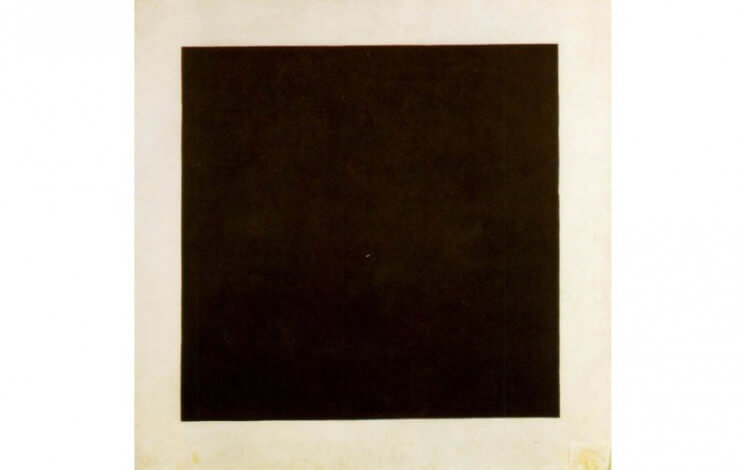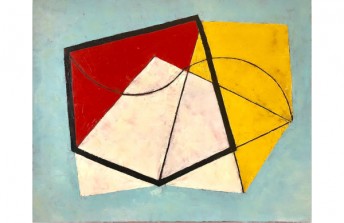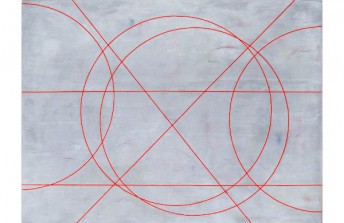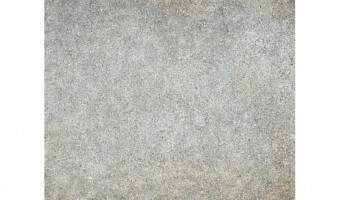Square Tendencies: Abstraction and Geometry
May 3, 2016
The use of geometric patterns in art is an ancient human tendency. Long before the European and American abstract artists explored geometric statements in their work, Islamic artists, bound by strict cultural guidelines regarding subject matter, vividly explored mathematically intricate geometric patterns in their work. In the early 20th Century, the language of geometry, and in particular the square, enjoyed a renewed foothold in the imagination of Western artists, especially those looking for new trends to explore in abstraction.
The Geometric Pioneers – Square and Abstract
About a hundred years ago, avant-garde painters began experimenting with geometric abstraction and with square abstract images. One of the most famous expressions of this tendency was Kazimir Malevich's Black Square, created in 1915. Black Square is just that, a painting of a black square on a beautifully stained, square white canvas. The boldness and beauty of Malevich's statement was groundbreaking at the time. Black Square opened doors to dozens of his contemporaries who also fervently went on to explore geometric abstraction in ways both simple and complex.
In the realm of the complex was a geometric abstractionist named Wassily Kandinsky, a painter who incorporated wildly intricate geometric patterns into his work. The square was a major recurring element of his work, often appearing in magnificent arrangements of intersecting lines, orbs and angled forms.
Bridging the simple boldness of Black Square with the intricacy of Kandisky's work, the Dutch painter Piet Mondrian brought the language of geometric abstraction into its maturity. Mondrian created canvases covered in lavish, intricate arrangements of squares, lines and grids, using bold, primary colors. He married Malevich's simple statement with Kandinsky's mathematical fervor. Mondrian's work had a futuristic feeling to it while also seeming almost decorative due perhaps to its architectural qualities. It seems, in fact, to suggest the work of Frank Lloyd Wright, one of his contemporaries, in its embrace of sparse, clean, mathematical forms.
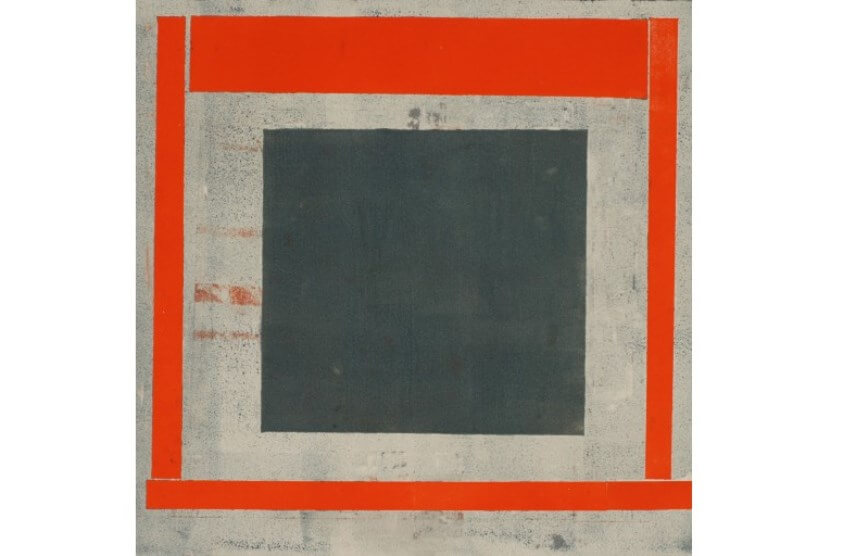 Elizabeth Gourlay - Slate Red Ash 2, 2013, 11 x 11.8 in
Elizabeth Gourlay - Slate Red Ash 2, 2013, 11 x 11.8 in
Mathematical Expressions
What the square expresses is sort of a mathematical perfection. It's a unified construction that represents equality, simplicity and balance. More importantly to abstract painters, the square is also the perfect expression of two-dimensional space. When an abstract artist utilizes square imagery, an aggressive statement of flatness is achieved. This square can communicate pride in the foundations of shape making. A square canvas painted with an image of a square is both ancient in its simplicity and cosmically universal in its visual language.
The square imagery of geometric abstractionists stands in contrast to the works of freer forms of abstraction, like Tachisme. Tachisme involves the application of an oozing stain pattern onto a painting' surface, inviting randomness and intuition into the painting process. While still a guided process, Tachisme invites chance to play an equal role in the fulfillment of the image. Geometric Abstraction is like Tachisme's antithesis. Geometric expressions of a mathematical visual language rely on specificity and exactitude. They defy randomness. While intuition may be involved in the evolution of a geometric abstract work, intentionality is evident in every gesture, line and shape.
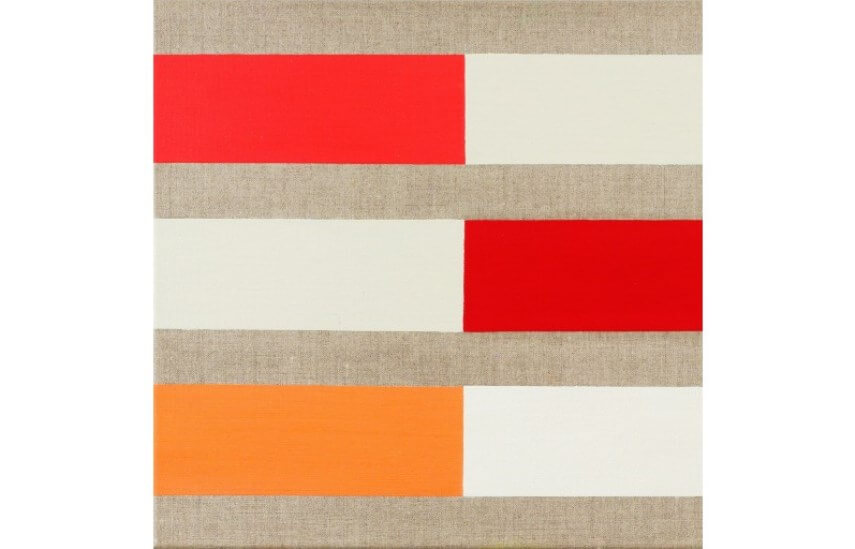 Jose Heerkens - L11. Passing Colours, 2013, 13.8 x 15.7 in
Jose Heerkens - L11. Passing Colours, 2013, 13.8 x 15.7 in
Contemporary Visual Geometry
The language of abstract geometry continues to find exciting new voices in today's generation of abstract artists. American born Elizabeth Gourlay makes geometric works using a variety of mediums including oil, graphite and flashe, a vinyl-based paint. Her painting "Slate Red Ash 2" is an iconic reinterpretation of the same bold statement Black Square made 100 years ago. Gourlay's washed out color palette gives the work a gritty, contemporary realness, bringing an ancient and powerful statement into the present.
Jose Heerkens, a contemporary Dutch artist, makes geometric abstractions using oil on linen and watercolor and acrylic on paper. Heerkens' pieces incorporate linear grid collectives into geometric compositions that intersect squares and lines. Her color palette has a rustic sensibility, combining shades of sienna reminiscent of old paper bags or cardboard with muted earth tones, greens and reds that pop with a new urbanity.
Swiss artist Daniel Göttin makes geometric abstractions using modern materials such as polystyrene, plastic and carpet. His paintings incorporate confident squares and rectangles, sometimes alone and sometimes layered, implying competing contemporary feelings of isolation and overdevelopment. Göttin's work beautifully echoes the power and simplicity of the early square abstractionists, expanding the modern visual slang of geometric abstraction in new ways.
Featured Image: Kazimir Malevich - Black Square, 1915
